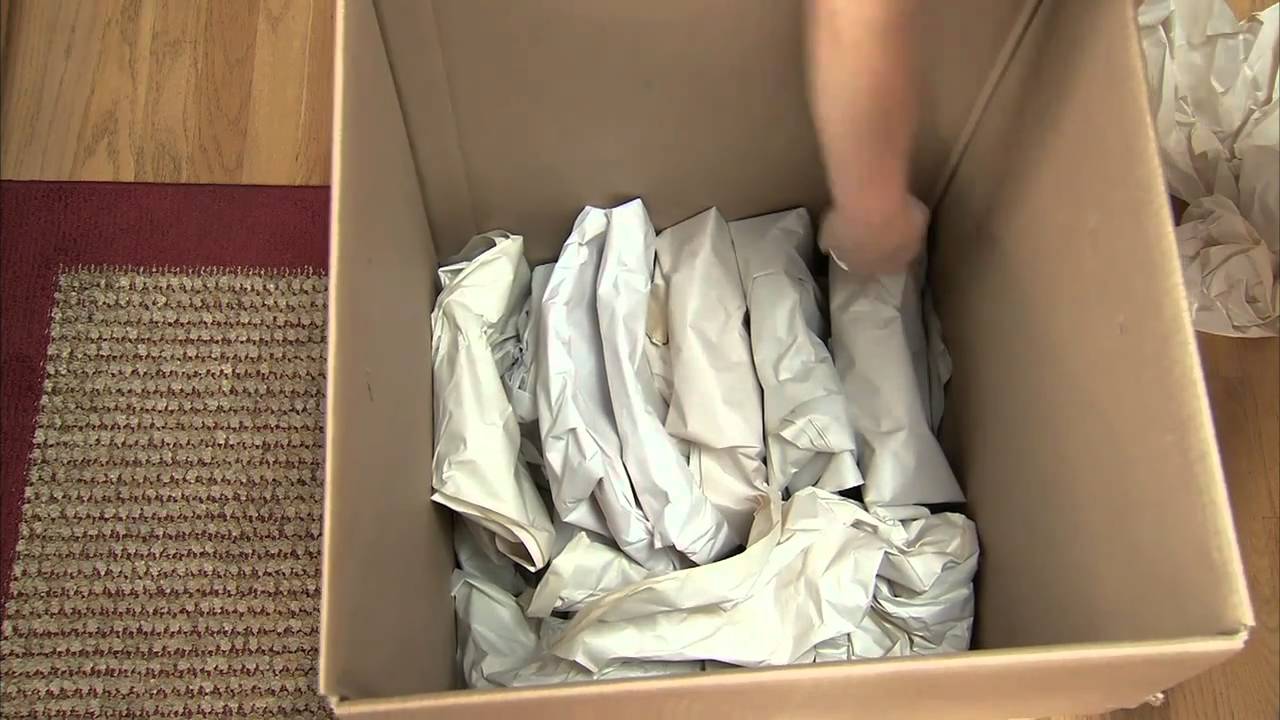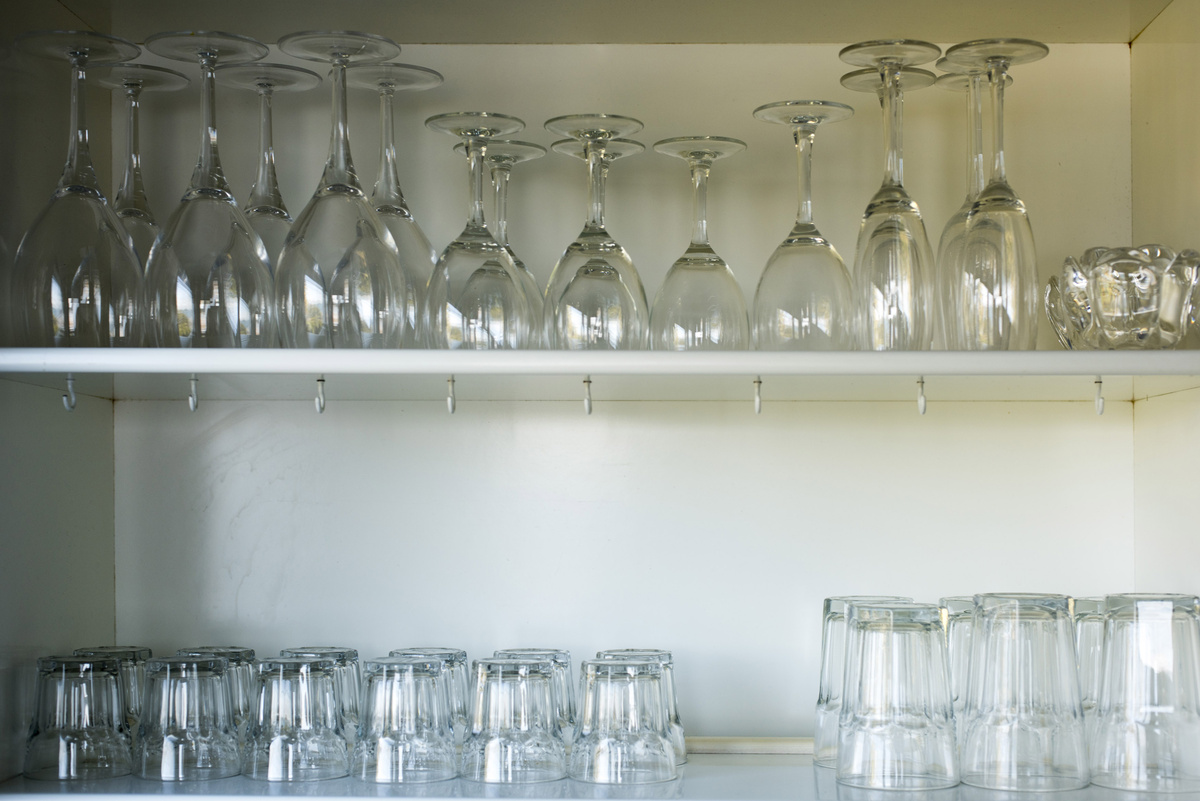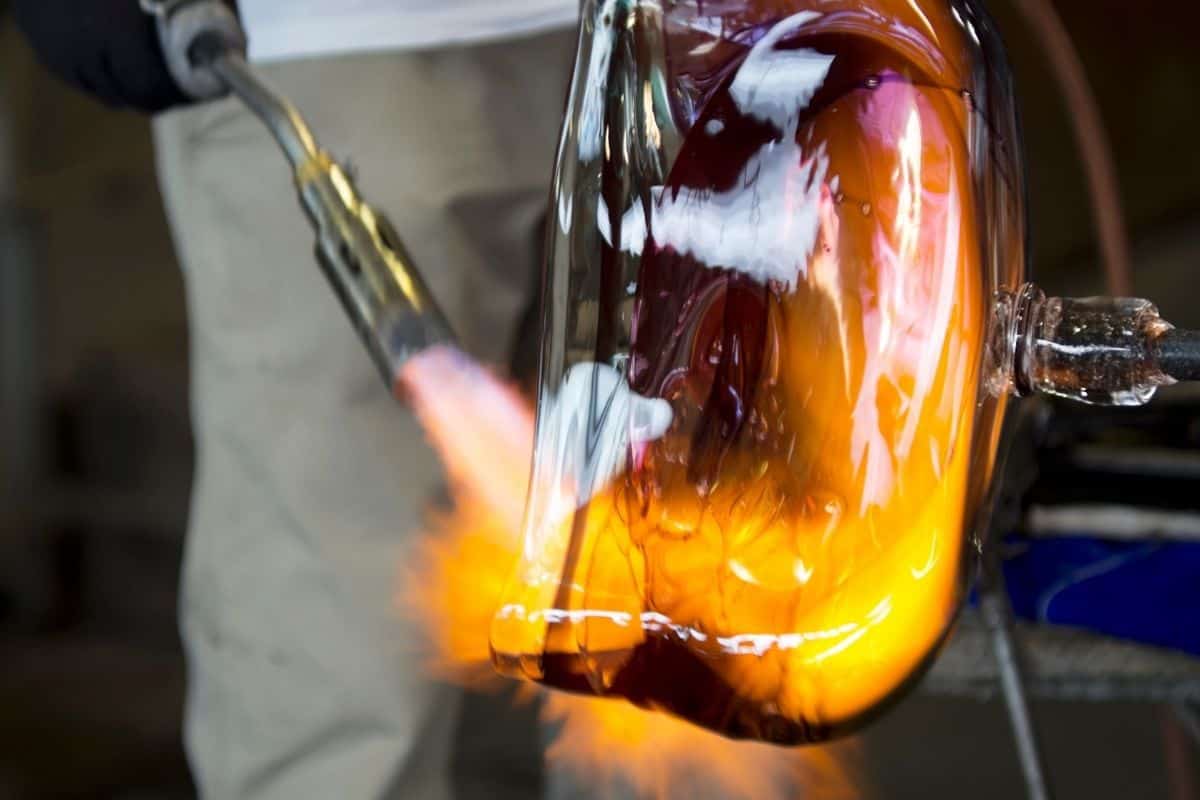

Tableware
What Is A Crystal Glass?
Modified: October 31, 2024
Discover the beauty and elegance of crystal glass tableware. Explore our collection of exquisite pieces crafted with precision and designed to elevate your dining experience.
(Many of the links in this article redirect to a specific reviewed product. Your purchase of these products through affiliate links helps to generate commission for Storables.com, at no extra cost. Learn more)
Introduction
Tableware plays a vital role in enhancing the dining experience, and one of the most elegant and luxurious materials used in tableware is crystal glass. Crystal glass brings a touch of sophistication and glamour to any table setting, making it a popular choice for special occasions and fine dining establishments.
In this article, we will explore the world of crystal glass, delving into its definition, characteristics, manufacturing process, uses and applications, care and maintenance, as well as the differences between crystal glass and regular glass. Let’s embark on this journey to discover the beauty and allure of crystal glass.
Key Takeaways:
- Crystal glass, with its exceptional clarity, brilliance, and weightiness, adds an element of elegance and luxury to any dining experience, making it a sought-after choice for fine dining establishments and special occasions.
- Proper care and maintenance, including hand washing, gentle drying, and careful storage, are essential for preserving the pristine condition and longevity of crystal glassware, ensuring it remains captivating for years to come.
Read more: What Are Noble Crystal Glasses?
Definition of Crystal Glass
Crystal glass is a type of glass that is made with a specific composition and manufacturing process to create a material with enhanced clarity, brilliance, and transparency. Unlike regular glass, crystal glass has a higher refractive index, which allows it to catch and reflect light in a captivating way.
To be classified as crystal, glass needs to meet certain criteria. In the United States, the minimum lead content required for a glass to be deemed crystal is 1% while in the European Union, the minimum lead content is 10%. The presence of lead oxide in crystal glass gives it a more lustrous appearance and weightier feel compared to regular glass.
Additionally, crystal glass often undergoes a process called annealing, where it is slowly cooled to relieve any internal stresses. This process helps to ensure the durability and strength of the glass, making it resistant to chipping and cracking.
It’s important to note that the term “crystal” is often used interchangeably with “lead crystal,” although not all crystal glass contains lead. Lead-free crystal, made with alternative materials such as barium oxide or potassium oxide, is increasingly popular due to health and environmental concerns. Both leaded and lead-free crystal glasses possess the same visual elegance and clarity, offering a luxurious touch to any table setting.
Characteristics of Crystal Glass
Crystal glass is known for its distinct characteristics that set it apart from regular glass. These characteristics contribute to its aesthetics, durability, and overall appeal. Here are some key features of crystal glass:
- Clarity: Crystal glass has exceptional clarity, allowing light to pass through it with minimal distortion. This clarity gives crystal glass a radiant and sparkling appearance, enhancing the visual appeal of tableware.
- Brilliance: Due to its higher refractive index, crystal glass exhibits a brilliance that surpasses regular glass. When light hits crystal glass, it scatters and reflects in a way that creates a beautiful play of colors and an eye-catching spectacle.
- Weight: Crystal glass has a substantial weight that adds to its feeling of luxury. This weightiness not only gives a sense of quality but also provides balance and stability to crystal glassware.
- Resonance: Crystal glass produces a clear and melodious ringing sound when flicked. This unique characteristic is a result of the glass’s composition and adds to the sensory experience of using crystal glassware.
- Exceptional Thinness: Crystal glass can be crafted to be extremely thin without sacrificing its strength and durability. This allows for delicate and intricately designed glassware, such as fine crystal wine glasses with thin stems.
- Resistance to Scratches: Crystal glass is relatively resistant to scratches, making it more durable than regular glass. However, it is still advisable to handle crystal glassware with care and avoid harsh cleaning techniques to preserve its pristine condition.
These distinctive characteristics make crystal glass highly sought after in the world of tableware, adding an element of elegance and sophistication to any dining experience. Whether it’s a crystal wine glass or a crystal bowl, the beauty and allure of crystal glassware are unmatched.
Manufacturing Process of Crystal Glass
The manufacturing of crystal glass involves a meticulous process that requires skilled craftsmanship and attention to detail. While the specific techniques may vary among manufacturers, here is a general overview of the steps involved in producing crystal glass:
- Batch Mixing: The process begins by carefully measuring and mixing the raw materials, which typically include silica sand, lead oxide (for lead crystal), or alternative compounds (for lead-free crystal), as well as other additives to enhance the glass’s properties.
- Melting: The mixture is then placed in a high-temperature furnace, where it undergoes a melting process. The intense heat causes the ingredients to liquefy and merge together, creating a molten glass mass.
- Refining: After melting, the glass is refined to remove any impurities, bubbles, or uneven textures. This is done by carefully stirring the molten glass to ensure a homogeneous composition and to achieve the desired clarity and transparency.
- Shaping: Once refined, the molten glass is ready for shaping. The glass is typically taken from the furnace and placed on a pontil, which is a long metal rod. Skilled glassblowers, using a combination of blowing, spinning, and shaping techniques, transform the molten glass into various forms such as bowls, vases, and stemware.
- Annealing: To strengthen and stabilize the glass, it goes through a process called annealing. The glass is slowly cooled to a specific temperature and then held at that temperature for a certain duration. This gradual cooling process relieves internal stresses and ensures the durability of the glassware.
- Finishing: After annealing, the glassware undergoes additional processes to refine its appearance. This may include polishing, cutting, engraving, or applying decorative elements like gold or platinum accents.
- Quality Control: Throughout the manufacturing process, rigorous quality control measures are implemented to ensure that the final product meets the standards of clarity, brilliance, and durability expected of crystal glass.
By combining time-honored techniques with modern technology, manufacturers produce exquisite crystal glassware that embodies elegance and luxury. Each piece of crystal glassware is a testimony to the skill and artistry of the craftsmen who bring these creations to life.
Uses and Applications of Crystal Glass
Crystal glass is highly valued for its beauty and sophistication, making it a popular choice for a variety of uses and applications. Here are some common ways in which crystal glass is utilized:
- Dining and Tableware: Crystal glassware is often seen adorning the tables of fine dining establishments and special occasions. From wine glasses and champagne flutes to decanters and serving bowls, crystal glassware adds a touch of elegance, elevating the dining experience.
- Home Decor: Crystal glass is frequently used in home decor items, including vases, candle holders, figurines, and chandeliers. These pieces not only enhance the aesthetic appeal of a space but also reflect and refract light to create a stunning visual display.
- Gifts and Awards: Given its association with luxury and prestige, crystal glass is often chosen as a material for special gifts and awards. Personalized crystal trophies, plaques, and giftware symbolize recognition and achievement, making them cherished keepsakes.
- Jewelry: Crystal glass is sometimes used in the creation of jewelry pieces. Its exceptional clarity and brilliance make it an attractive alternative to gemstones, and it can be employed in pendants, earrings, bracelets, and even watches.
- Artistic and Sculptural Pieces: Crystal glass serves as a medium for artists and sculptors to express their creativity. Intricate sculptures, paperweights, and art installations made from crystal glass showcase the artistic and aesthetic possibilities of the material.
- Collector’s Items: Crystal glassware has long been coveted by collectors around the world. Antique crystal pieces, such as vintage stemware or decorative bowls, hold both historical and aesthetic value, often becoming prized possessions.
The versatility of crystal glass makes it a desirable material for a wide range of applications. Whether it’s used in fine dining, home decor, jewelry, or art, crystal glass showcases its dazzling beauty and adds a touch of opulence to any setting.
When shopping for crystal glassware, look for pieces with a high lead content, as this gives the glass its clarity, brilliance, and weight. High-quality crystal will also produce a musical tone when tapped.
Read more: What Are Riedel Crystal Glasses Made Of?
Care and Maintenance of Crystal Glass
To preserve the beauty and longevity of your crystal glassware, proper care and maintenance are crucial. Here are some essential tips to keep in mind:
- Hand Wash Only: Crystal glass is delicate and can be easily damaged in a dishwasher. It is recommended to wash crystal glassware by hand using warm water and a mild dishwashing soap. Avoid using abrasive sponges or harsh cleaning agents that may scratch or cloud the glass.
- Gently Dry: After washing, gently dry crystal glassware using a soft, lint-free cloth. Avoid air drying or using rough materials that can leave scratches or lint on the surface of the glass.
- Avoid Extreme Temperatures: Crystal glass is sensitive to rapid temperature changes. Avoid pouring hot liquids into a cold crystal glass, as it may cause thermal shock and lead to cracking or breakage. Similarly, avoid placing crystal glassware in the freezer or exposing it to extreme heat.
- Store Carefully: When not in use, store crystal glassware in a secure and upright position to prevent it from chipping or clinking against other objects. Use soft padding or felt dividers to separate delicate pieces and avoid stacking them too closely together.
- Handle with Care: When handling crystal glassware, be gentle and avoid gripping the delicate areas, such as the stem of a wine glass. Hold the glass by the base or the bowl to prevent unnecessary stress or potential breakage.
- Keep Away from Harsh Chemicals: Crystal glassware should not come into contact with harsh chemicals, such as ammonia or bleach, as they can damage the glass’s surface and lead to cloudiness. It is also advisable to avoid contact with perfumes or lotions, as they may leave a residue on the glass.
- Regular Inspection: Periodically inspect your crystal glassware for any signs of damage or deterioration. Look out for chips, cracks, cloudiness, or loose elements. If you notice any issues, it is best to consult a professional glassware repair service.
By following these care and maintenance practices, you can ensure that your crystal glassware remains pristine and captivating for years to come. Treating crystal glass with the respect and attention it deserves will help preserve its visual allure and allow you to enjoy its beauty for special occasions and everyday indulgence.
Differences Between Crystal Glass and Regular Glass
Crystal glass and regular glass may appear similar at first glance, but there are distinct differences between the two. These differences lie in their composition, manufacturing process, and characteristics. Here are the key contrasts between crystal glass and regular glass:
- Composition: Crystal glass typically contains a higher percentage of lead oxide (or alternative compounds for lead-free crystal) compared to regular glass. This added element gives crystal glass its enhanced clarity, brilliance, and weightier feel.
- Refractive Index: Crystal glass has a higher refractive index than regular glass, which means it can bend and reflect light more effectively. This attribute gives crystal glass its ability to catch and scatter light, resulting in a captivating play of colors and increased brilliance.
- Sound: When tapped or flicked, crystal glass produces a clear and resonant ringing sound. Regular glass, on the other hand, produces a duller and less melodious sound. This distinct auditory characteristic is a result of the different compositions and structures of the two materials.
- Weight: Crystal glass is generally heavier than regular glass due to its composition and higher lead content. This weightiness adds to the luxurious feel and quality of crystal glassware.
- Clarity: Crystal glass exhibits exceptional clarity, allowing light to pass through with minimal distortion. Regular glass, while transparent, may show some slight imperfections or distortions in comparison.
- Durability: Crystal glass, with its lead content and annealing process, tends to be more resistant to chipping and cracking compared to regular glass. However, both types of glass can still be fragile and require careful handling to avoid damage.
It’s important to note that while lead oxide is traditionally used in making crystal glass, lead-free crystal alternatives have become increasingly popular due to health and environmental concerns. These lead-free options utilize other compounds, such as barium oxide or potassium oxide, to achieve similar visual characteristics to leaded crystal glass.
Understanding the differences between crystal glass and regular glass allows us to appreciate the unique qualities and allure of crystal glass. Whether it’s for special occasions or daily use, crystal glassware adds a touch of elegance and sophistication to any table setting.
Popular Types and Brands of Crystal Glass
In the world of crystal glass, there are several renowned types and brands that have captivated users with their exceptional craftsmanship, quality, and design. Let’s explore some of the popular types and brands of crystal glass:
- Swarovski Crystal: Swarovski is a world-renowned brand known for its precision-cut crystal glass. Swarovski crystal is highly regarded for its exceptional clarity, brilliance, and meticulous attention to detail. It is widely used in jewelry, figurines, home decor, and fashion accessories.
- Waterford Crystal: Waterford Crystal is an iconic brand that has been producing exquisite crystal glassware since 1783. Their collections offer an extensive range of stemware, barware, bowls, vases, and home decor items. Waterford Crystal is recognized for its stunning designs, expert craftsmanship, and distinctive patterns.
- Baccarat Crystal: Baccarat is a French luxury brand renowned worldwide for its crystal glassware, jewelry, and home decor. Baccarat crystal is recognized for its impeccable craftsmanship, timeless designs, and extraordinary brilliance. Their collections include stemware, barware, lighting, and decorative accessories.
- Riedel Crystal: Riedel is a renowned glassware brand that specializes in wine glasses and decanters. Riedel crystal glasses are celebrated for their ability to enhance the aroma, flavor, and overall wine experience. The brand offers a wide range of varietal-specific glassware designed to optimize the characteristics of different wine types.
- Orrefors Crystal: Orrefors is a Swedish crystal glassware brand with a rich heritage dating back to 1898. Known for its elegant and contemporary designs, Orrefors crystal combines traditional craftsmanship with innovative techniques. Their collections include stemware, vases, bowls, and decorative pieces.
These are just a few examples of the popular types and brands of crystal glass that have earned a reputation for their exceptional quality and design. However, there are many other respected crystal glass manufacturers, each with their own unique style and offerings.
When choosing crystal glassware, it’s important to consider your personal preferences, the occasion, and the intended use. Whether you’re looking for a stunning centerpiece for your table or a special gift, these renowned brands offer a wide variety of options to suit every style and taste.
Conclusion
Crystal glass is a material that exudes elegance, sophistication, and timeless beauty. Its exceptional clarity, brilliance, and unique characteristics make it a popular choice for tableware, home decor, jewelry, and artistic creations. The manufacturing process of crystal glass involves skilled craftsmanship and meticulous attention to detail, resulting in luxurious and aesthetically pleasing pieces.
When caring for crystal glassware, it is essential to handle it delicately, wash it by hand, and store it properly to ensure its longevity and preserve its pristine condition. Regular inspections can help identify any damage or signs of wear that require professional attention.
Crystal glass stands apart from regular glass, thanks to its composition, higher refractive index, weight, resonance, and overall visual appeal. Crystal glassware creates a stunning and captivating display, whether it’s the sparkle of a crystal wine glass or the vibrant colors reflected in intricately crafted art pieces.
There are several prominent brands that have become synonymous with quality and craftsmanship in the world of crystal glassware, including Swarovski, Waterford, Baccarat, Riedel, and Orrefors. Each brand offers its unique designs and collections, allowing you to find the perfect crystal glassware to suit your personal style and preferences.
In conclusion, crystal glass adds a touch of luxury and sophistication to any setting. Whether you’re hosting a formal dinner, decorating your home, or looking for a special gift, crystal glassware is sure to impress and elevate your experience. Embrace the beauty and allure of crystal glass, and let it be a symbol of elegance and refinement in your life.
Frequently Asked Questions about What Is A Crystal Glass?
Was this page helpful?
At Storables.com, we guarantee accurate and reliable information. Our content, validated by Expert Board Contributors, is crafted following stringent Editorial Policies. We're committed to providing you with well-researched, expert-backed insights for all your informational needs.















0 thoughts on “What Is A Crystal Glass?”